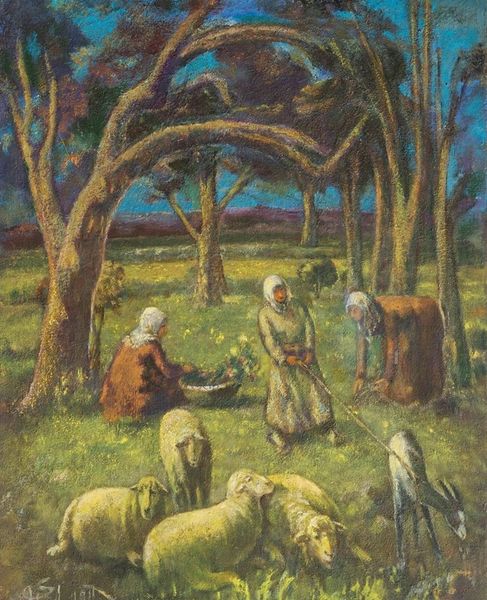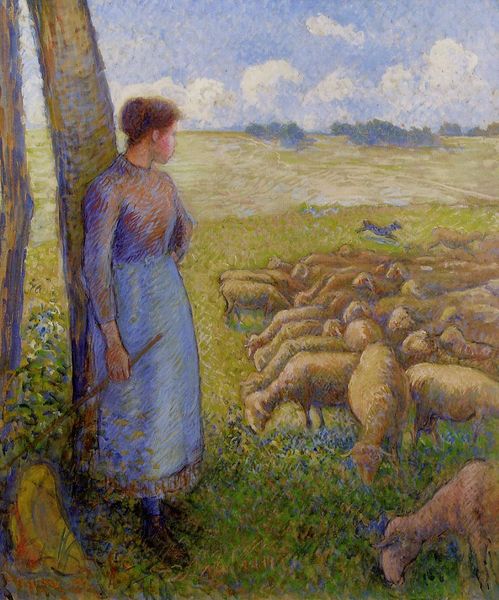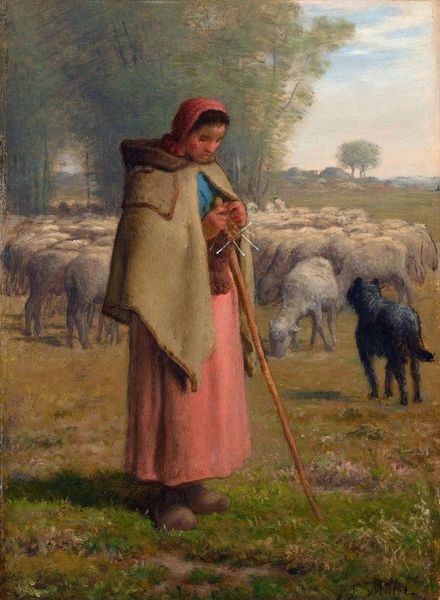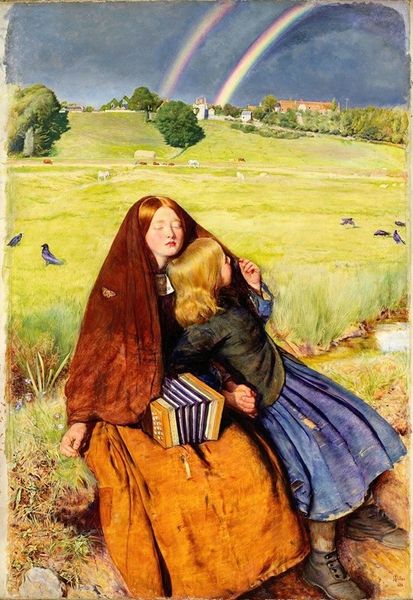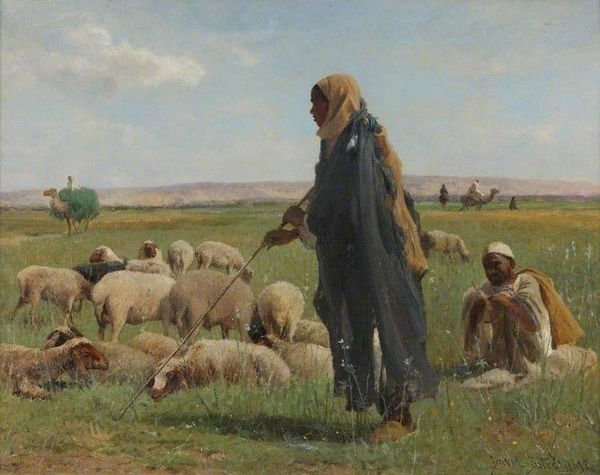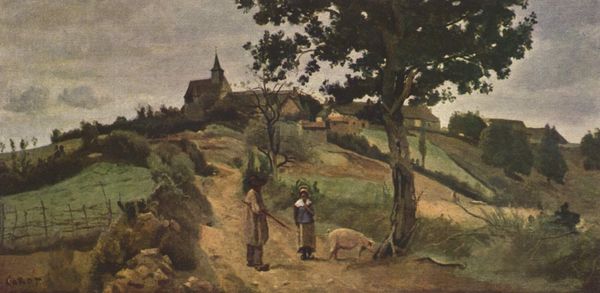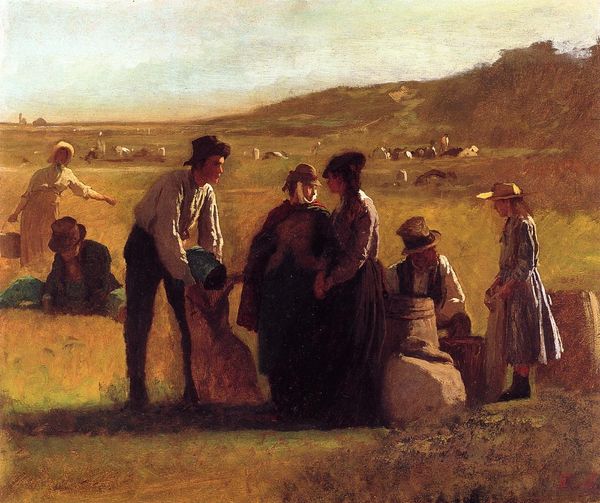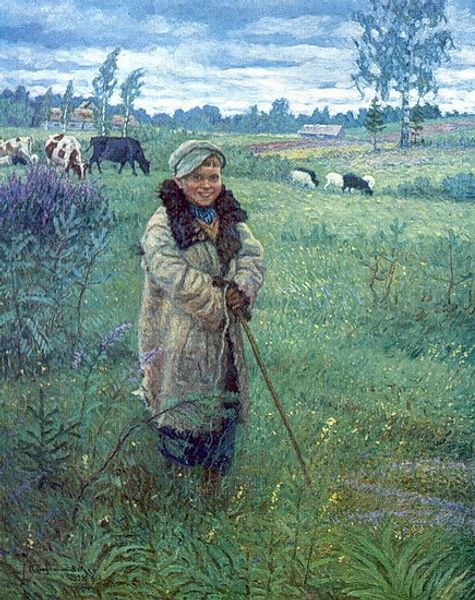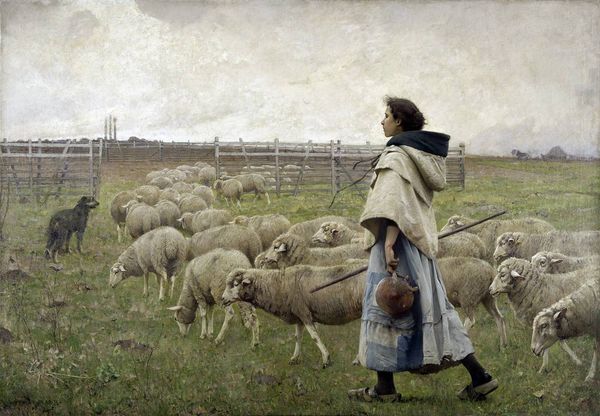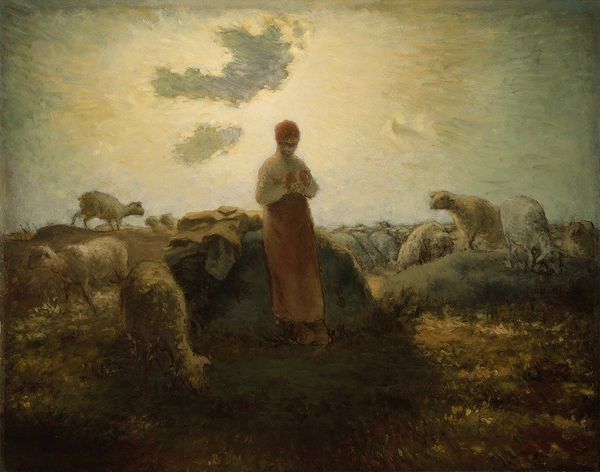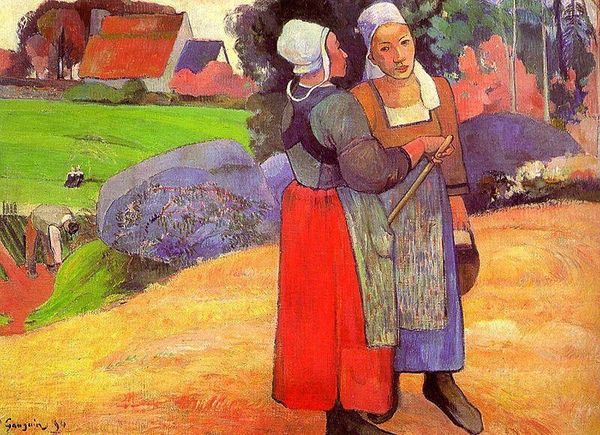
painting, plein-air, oil-paint, impasto
#
portrait
#
tree
#
painting
#
impressionism
#
plein-air
#
oil-paint
#
landscape
#
figuration
#
oil painting
#
impasto
#
france
#
genre-painting
#
post-impressionism
#
nature
Copyright: Public domain
Curator: I'm immediately struck by the stillness, that pervasive tranquility emanating from the scene. It feels... timeless. Editor: Let's delve into Camille Pissarro's "Shepherdesses" from 1887, currently housed at the Matsuoka Museum of Art in Tokyo. Pissarro, known for his post-impressionist techniques, showcases a blend of pointillism and traditional brushwork here using oil on canvas. What elements specifically catch your eye regarding materiality? Curator: It’s the impasto for me – the thickness and texture of the oil paint. You can practically feel the rough bark of the trees and the wool of the sheep. Pissarro's handling of paint makes it feel more immediate, less staged than earlier pastoral scenes. And how that visible texture serves to capture the harsh realities for laborers... It's far from romanticized. Editor: Indeed. Considering the period, think about the institutional forces at play. Post-Impressionism was still finding its place, challenging academic painting. Genre scenes like this one had a complex role—nostalgic yet potentially critical of rural conditions and of urban ascendancy at that time. This work exists both inside and outside the then very stringent confines of the art market, the salons. Curator: It's fascinating to consider this piece in relation to land, labor, and gender. The shepherdesses are framed not as passive objects but as workers rooted to the land, their labour providing substance for burgeoning cities like Paris. Look at how Pissarro constructs the very light falling on them, like it's another tool for shaping the means of their production and place within a growing consumer landscape. Editor: Absolutely. It underscores a tension. "Shepherdesses" exists as both art object displayed in museums, valued monetarily, and it operates as a kind of commentary on broader socio-economic transformations occurring within the late 19th century. How do we exhibit this to fully realize both these functions? Curator: Maybe foregrounding the context: the shift from rural agricultural life to the rising urban sphere, juxtaposing the means by which labor shifted under late capitalism with their lived realities through material objects like their tools or their clothes. That contextualization becomes vital for seeing the work for what it both is, and performs. Editor: A layered viewing, certainly. Pissarro encourages us to consider these women both as aesthetic figures and as participants in broader, material, historical contexts. It speaks to art's ongoing power as a reflection of societal change. Curator: And ultimately a reminder that art and material culture, in turn, shapes those socio-political spaces themselves. A continuing dialogue.
Comments
No comments
Be the first to comment and join the conversation on the ultimate creative platform.
